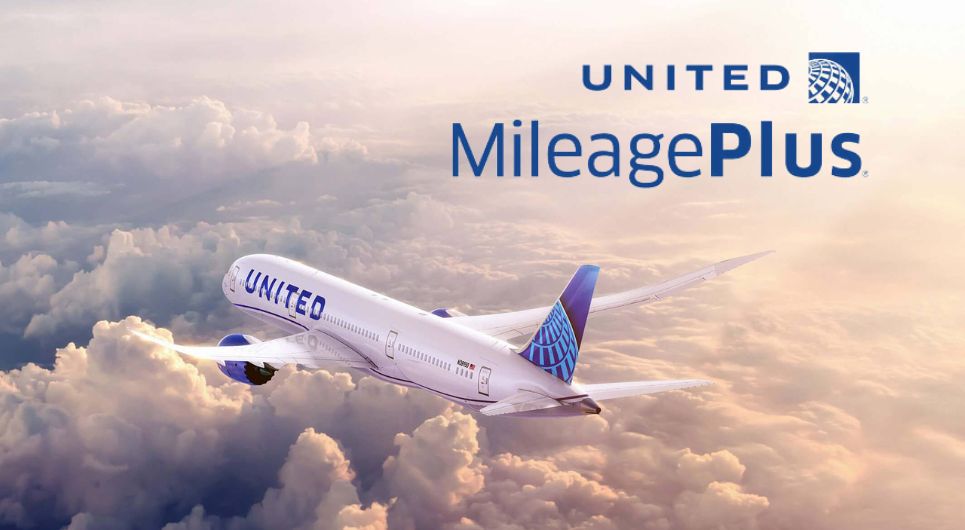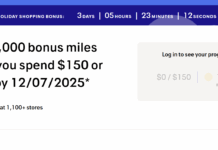At Frequent Miler, we keep a database of point valuations called “Reasonable Redemption Values.” These are estimates of the “worth” of airline miles, hotel points, transferable points, and more. The idea is that we try to identify the point at which it is “reasonable” to get that much value or more from your points.
This information is critical for making informed decisions. In fact, it’s a key component of the First Year Value information shown on our Best Credit Card Offers page, and it’s similarly used to show which cards offer the best value for everyday spend and which offer the best category bonuses.
When we first started looking at the value of airline miles, we used a laborious manual process to create estimates, but we now have a much better way of pinning down the value of United MileagePlus miles.
Points Path, which is a Google Flights extension, keeps records of both the point prices and cash prices of all searches done via its platform. Points Path founder and former Frequent Miler writer, Julian Kheel, has made this data available to us for the purpose of identifying rewards program point values.
Thanks to Julian and Points Path, we now have access to the results of almost 5 million domestic and international United MileagePlus search results that show both the cash and award prices for the same flight (including partner flights). Using this data, we can provide a far better estimate of the “Reasonable Redemption Value” of United miles than we were ever able to obtain by using manual calculations.
Based on an analysis of Points Path’s data, we’ve concluded that the new Reasonable Redemption Value (RRV) for United miles = 1.3 Cents Per Mile.

Points Path Data
Listed below is a summary of the raw data from Points Path. There are two values that are important to us. The median is the point that half of the observed results offered better point value and half offered worse value. We also have the average value of all the searches, in total and by booking class.
| Cabin | Median Value (cpp) | Average Value (cpp) | Number of data points |
|---|---|---|---|
| Economy | 1.09* | 1.31* | 3,915,475 |
| Premium Economy | 1.32 | 1.62 | 136,894 |
| Business | 1.46 | 1.82 | 732,974 |
| First | 1.01 | 1.39 | 69,172 |
| Combined | 1.11 | 1.39 | 4,854,515 |
Calculations
For our airline RRV values, we’re going to use the midpoints between the average value and the median. The reason is that the difference between the two is an indicator of how often more valuable sweet spots can be found in a given category.
If the median is 1 cent per point, that means that half of all searches produced a value of less than 1 cent per point, and the other half above 1 cent per point. However, if the same data showed an average of 2 cents per point it would mean that some of the 50% of searches that were above 1 cent per point were so far above that they doubled the result to 2 cents per point. Likely, that would indicate a higher prevalence of available sweet spot awards with outsized redemption value…something we like to see.
We see this with United, as there’s a 25% increase from the median to the mean (or average). That indicates that, even though only half of the searches Points Path tracked showed redemptions above 1.11 cents per mile, enough of those searches produced such outsized value that it raised the average redemption number to 1.39 cents per mile. To us, this means that there’s still some opportunity for additional value to be had when using UA miles.
- Points Path Median Observed Value for United MileagePlus redemptions: 1.11 cents per mile
(based on the past 365 days of data as of February 21, 2025) - Points Path Mean Observed Value for United MileagePlus redemptions: 1.39 Cents Per Mile
(based on the past 365 days of data as of February 21, 2025 - Range: 1.11 to 1.39.
- For our RRV, we’ll pick the middle point between 1.11 and 1.39 and then round it to one decimal, or 1.3 Cents Per Mile.
Conclusion
The exercise described above resulted in an unchanged Reasonable Redemption Value (RRV) for United miles of 1.3 cents per mile. That’s the point at which most readers are likely to get that much value or more.
Please keep in mind that this does not mean that you will always get 1.3 cents per mile value from your MileagePlus miles. In practice, you’ll sometimes find better redemptions and sometimes you’ll find worse. However, we believe that 1.3 cents is a “reasonable” expectation for what your United miles are “worth” when used towards award flights.





Reading FM isn’t doing us much good if we can’t get more value than the masses, which is what this shows. On the other hand, does the data take into account taxes, fees, and often scamcharges on award redemptions, and/or the miles and points that could earned by using cash? This is rough guidance, useful to be sure, but no more than that.
In “Calculations” last paragraph
“To us, this means that there’s still some opportunity for additional value to be had when using UA miles.”
The link leads to AA sweet spots, not United
I remember when I got a business class ticket from EWR to Perth Australia with the last leg a code share with Virgin for 110,000 points with a lie flat Polaris bed last year. I def made above that 1.3 cent valuation… hope to score that again!
For awards in economy, don’t Points Path compare award prices with Basic Economy cash fares? If that’s how Points Path data are collected, don’t they significantly underestimate the value of miles? Even if comparisons were made with lowest nonrefundable standard economy fares, the value of miles is still a bit underestimated because of the refundable nature of award tickets.
Yes, that’s correct. If you take a look at the table, you’ll see that we’ve noted that the economy values were corrected (upward) to take account for that.
Where did the 1.49 come from, in your RRV calculation? I think that it should be 1.39, which would bring your final valuation down to 1.25.
I don’t see the 1.49, but you’re right, the final valuation was 1.25. As it says in the post, we round to one decimal, which makes it 1.3.
I think you may have a typo saying 1.56 where you meant 1.39?
It would be helpful to me if you also published the 80th percentile value as I try to be in the top 20% of redemption values.
Finally, assuming your dataset contains the origin and destination airports you could now presumably analyze not only the value of the points but also the markets which have more high-value redemptions than average.
Thanks, fixed. What we have actually isn’t that granular, in terms of percentiles and orgin/destination airports, but we may be able to get it from Points Path for next time.
While I like the new approach, the results surprise me. I often see 2-3 cpm on United, particularly if I’m traveling Tue-Thu or Sat. Maybe it’s just my travel pattern.
Also should mention that if you have certain UA credit cards that give you discounts on award travel, those can be substantial and can sometimes greatly increase the value of your miles. For example, I’ll see a $250 one-way fare going for 15K miles, but reduced to 12K because I have a UA card, which raises the value from 1.67 to 2.1 cpm.
I like this thoughtful new approach. One of my biggest issues with getting decent value from United points is that I’d often have to connect through multiple airports and spend 15 hours traveling, which made me very skeptical of the point values that were being published around them. Thanks for doing this!
Would it be fair to say that this is the reasonable redemption value for economy tickets on Delta, American and United in the continental United States? My next three air trips are on miles in the continental US (miles because I don’t want another voucher if I need to cancel), and yes, the values I am getting are terrible–similar to your numbers. I am only using miles due to the uncertainty surrounding the pandemic. However, using AA miles, I’ve gotten outstanding value pre-pandemic primarily in J on long-hall flights on AA metal as well as Cathay Pacific, JAL, Qatar (Q-Suites) and Qantas (as well as four cancelled fligths on Etihad due to the pandemic). Same using United miles long-hall primarily in J on United, SAS, Brussels, Lufthansa and Thai (as well as EVA and Asiana but that also got cancelled due to the pandemic). I also had two trips to Aruba on Delta in F using SkyMiles that got cancelled due to the pandemic that were a great value. When international travel really opens up again (no tests or quarantine or arm bracelets to enforce quarantine), would you expect these values to go up when we can use our miles for their intended purpose, at least for those of us invested heavily in “the hobby”?
Yes, our RRVs have always been based on domestic economy awards while understanding that a much better use of miles is for international business class. The concept is that most people use their miles & points for domestic awards and so these are reasonable valuations to expect in those cases. Separately, I’m considering compiling target values for international business class so that we can look at the two numbers like this: RRV = the lowest amount you should consider redeeming miles for; and new metric = reasonable target to shoot for when cherry-picking high value awards.
If you could pull that together (either or both new metrics), that would be fantastic! Thanks.
While I accept that the vast majority of flyers redeem for domestic economy is that also true of your readers? I don’t even think of using miles for domestic flights (except Southwest). I’m focused entirely on high-value international travel. Of course, that’s much harder to model due to sweet spots, highly variable ability, etc.
Spot-on, and really important.
And of course, in addition to being harder, it would also hurt the income of the bloggers. So, that’s not gonna happen.
Good stuff. I appreciate the systematic approach!
United miles are worth less than Delta miles? That is a very surprising conclusion.
For domestic flights, yes. Wait till you see the AA numbers…
Wait until you see the miles for international premium rewards – those are positively eye-watering (and in a fast race to the bottom for Delta and United).